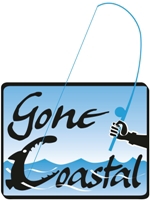FWC Gone Coastal: Scalloping offers family-friendly fun
Florida Fish & Wildlife Conservation Commission sent this bulletin at 06/26/2014 08:18 AM EDT
(Having trouble viewing this email? View it as a Web page.)

For immediate release: June 26, 2014
June “Gone Coastal” column
By Amanda Nalley
Photos available on FWC’s Facebook page: https://www.facebook.com/MyFWC/posts/10152486236268349
Suggested Tweet: Have family-friendly fun #scalloping. Learn more @MyFWC Gone Coastal: https://content.govdelivery.com/accounts/FLFFWCC/bulletins/c04368 #Florida
Scalloping offers family-friendly fun
I’ll never forget my first time scalloping. It was 2008 and there I was, face down in the water, sun warming up my back, seagrass tickling my feet and legs, searching for hidden treasure and trying not to look up, lest there be something larger than me swimming about. A boat loomed above us, dive flag displayed, warning others that folks were in the water. In the distance, the Steinhatchee coast sat, waiting for our return. That was the day I fell in love with the sport of scalloping.
There is something calming about intensely looking through plot after plot of identical grass for a hidden shell.
You may not believe it, but I even enjoy the cleaning part (something that makes me quite popular with the scalloping crowd).
It is easy to see why the season is touted as a family-friendly activity. Anyone who can snorkel can participate, and if they don’t want to be in the water, relaxing in the boat is not bad either. Cleaning time is great for catching up on the latest gossip or fishing tale. And then, after all is said and done, you get to take your bounty home and make a delicious family meal.
The economic benefits of the season are huge: boatloads of people flock to the open region, often staying a few nights, renting boats, eating in local restaurants and purchasing tackle and gear while enjoying the opportunity to harvest a great food from numerous access points. The open region includes all Gulf state waters (from shore to 9 nautical miles) from the Pasco-Hernando County line to the west bank of the Mexico Beach Canal in Bay County. While scallops can be found outside of these open areas, it is within this region that bay scallops are found in large enough numbers to be sustainably harvested.
This year, Gov. Rick Scott asked the FWC to open the bay scallop season June 28 instead of July 1. This way the season would open on a weekend and visitors and residents alike would be free to take full advantage of the beginning of the season.
Don’t feel rushed though, while the beginning of the season is exciting, there are plenty of opportunities for success mid to late in the season. By then, scallops have gotten bigger and are sometimes easier to find.
Interested in participating? While a boat will provide you with the most access to scalloping areas, there are places you can walk to from shore. At the very minimum, you will need a mask or goggles, a recreational fishing license (unless you are exempt), something to hold your scallop catch in such as a mesh bag, and something to make sure you don’t go over your limit, which is 2 gallons of whole scallops in the shell, or one pint meat per person.
Have a boat? The maximum vessel limit is 10 gallons of whole scallops in the shell or ½ gallon of meat. The daily per-person bag limit still applies but, for example, if you have more than five people aboard (each being able to take 2 gallons whole), you still cannot have more than 10 gallons total. Bag limits help ensure the scallop population remains sustainable.
A divers-down flag is also required when scalloping from a boat to ensure other boaters are aware that there are people in the water. Stay safe this season and remember to use your divers-down flag. To learn more about these requirements, visit MyFWC.com/Boating and click on “Boating Regulations” and “Divers-Down Flag.”
Once onshore, cleaning scallops is a cinch. Use an old spoon or knife (just be careful) to pry the shells slightly apart and then run the spoon along the inside of one of the shells, which will separate the meat from the shell. Once open, you will see the white scallop meat in the middle, surrounded by the darker guts. Run the spoon around the edge of the guts and then pull it up and off, leaving only the scallop meat attached to the shell. Finally, use the spoon to separate the meat from the shell. This is just one way to do it (another fan favorite involves a shop-vac), so feel free to do some research before getting started.
Bay scallops are great sautéed and tossed in with pasta, or eaten over a bed of lettuce. There are tons of recipes out there, and looking for them is almost as exciting as searching for the scallops.
I hope you can get out on the water and experience this wonderful season yourself. If you do, don’t forget to send us your photos at Saltwater@MyFWC.com.
Gone Coastal is one of many ways that the Florida Fish and Wildlife Conservation Commission (FWC) Division of Marine Fisheries Management is helping recreational anglers understand complex saltwater regulations and learn more about saltwater fishing opportunities and issues in Florida. We are also available to answer questions by phone or email anytime, and we would love the opportunity to share information through in-person presentations with recreational or commercial fishing organizations. To contact the FWC’s Regulatory Outreach subsection call 850-487-0554 or email Saltwater@MyFWC.com.
-30-
AN/KP/BB/MFM
WBD/SCB

